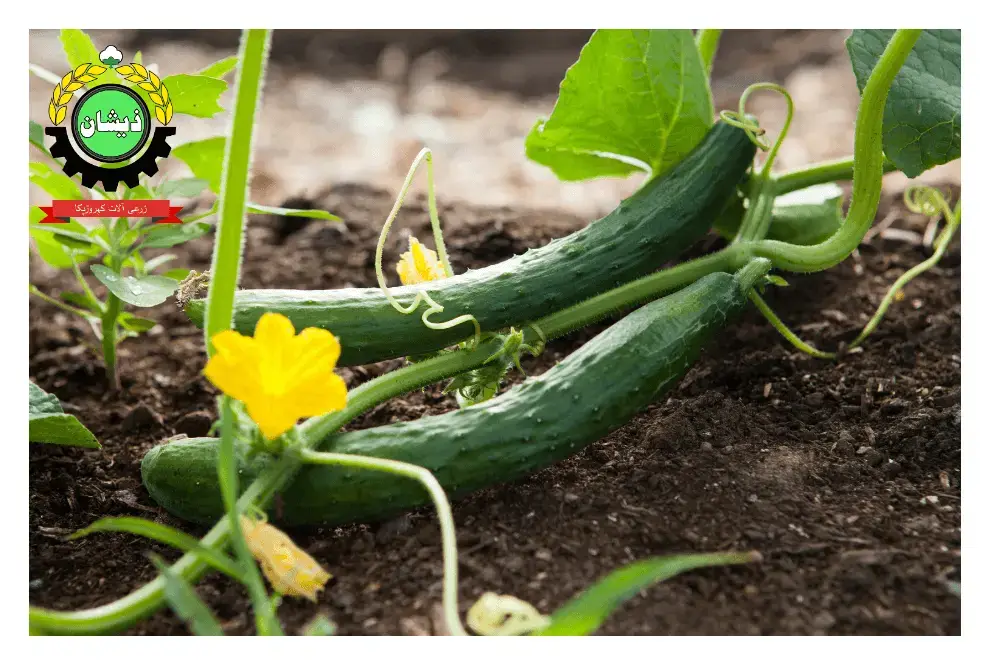How to Plant, Grow and Harvest Cucumbers?
Cucumbers are refreshing and versatile vegetables that are easy to cultivate in any backyard, regardless of experience level or knowledge. In this guide, whether experienced gardeners or beginners alike, will find all of the information needed to plant, nurture and harvest cucumbers successfully – from selecting an ideal location and caring for their plants to harvesting their bounty! Let’s discover all that lies behind an abundant harvest!
Understanding Cucumbers
Cucumbers are vining plants that belong to the Cucurbitaceae family. They produce long, cylindrical fruits with smooth or slightly bumpy skin. They can be divided into two main groups; slicing cucumbers are most often eaten raw while pickling cucumbers are designed for pickling.
Varieties of cucumbers
There are various varieties of cucumber available, each boasting distinctive qualities. Some popular slicing cucumber varieties include the “Marketmore,” “Burpless,” and “English” cucumbers. For pickling, you may consider varieties like “National Pickling,” “Boston Pickling,” or “Kirby.”

Choosing the Right Location to Grow Cucumbers
To ensure healthy cucumber plants and a successful harvest, selecting the right location for your cucumber patch is crucial.
Sunlight requirements
Cucumbers thrive when exposed to direct sunlight for at least six to eight hours each day, so select an area that receives at least this much direct light. Avoid shaded areas or spots with excessive shade from nearby trees or structures.
Soil conditions
Cucumbers prefer well-draining soil that is rich in organic matter. Prepare the soil by clearing away any weeds, rocks, or debris from the planting area. Incorporate compost or well-rotted manure to improve soil fertility and structure.
Watering considerations
Cucumbers have high water requirements, so it’s important to choose a location where the plants can easily access water. Consider planting near a water source or ensure that your garden has a reliable irrigation system in place.
Preparing the Soil
Before planting cucumber seeds, it’s crucial that soil preparation be undertaken correctly so as to create an ideal environment for their success.
- Clearing the area: Clear the planting area of any remaining debris, weeds, or grass. Remove any large rocks or obstructions that may impede the growth of cucumber roots.
- Soil amendment: Incorporate organic matter, such as compost or well-rotted manure, into the soil. This improves soil fertility, drainage, and moisture retention. Aim for a loamy soil texture that is well-draining but also retains enough moisture.
- Testing the soil pH: Cucumbers prefer a slightly acidic to neutral soil pH between 6.0 and 7.0. Utilize a soil testing kit to measure the pH level in your soil. If necessary, adjust the pH by adding organic amendments or specific soil additives to achieve the optimal range.
Read Related Topics:
Wheat Price in Pakistan Today | Gandum Rate per 40KG
NARC G1 Garlic in Pakistan: Latest Prices
Planting Cucumber Seeds
As soon as the soil is ready, you can put the cucumber seeds in. You have two options: starting the seeds indoors or direct sowing.
Seed selection
Choose high-quality cucumber seeds from a reputable source. Consider the specific cucumber variety you want to grow and ensure the seeds are fresh and viable.
Starting seeds indoors
If you have a shorter growing season or want an early start, you can start cucumber seeds indoors. Fill seed trays or small pots with seed-starting mix, plant the seeds according to the packet instructions, and provide warmth and adequate lighting. Transplant the seedlings outdoors when the soil has warmed up and all risk of frost has passed.
Direct sowing
Cucumbers make ideal direct sowing candidates in the garden. Wait until the soil temperature reaches 60degF (15degC) before sowing seeds directly in small hills or mounds that follow variety-recommended spacing guidelines and plant only healthy seedlings in each hill. Once seedlings emerge, thin out any weak ones to select only the strongest plants to keep.
Caring for Cucumber Plants
Proper care is essential to ensure vigorous cucumber plant growth and a healthy harvest.
Watering
Cucumbers have high water needs, particularly during the flowering and fruiting stages. Provide consistent moisture by watering deeply and regularly. Avoid overhead watering, as it can increase the risk of disease. Instead, direct the water towards the base of the plants.
Fertilizing
Cucumbers benefit from regular fertilization to support their growth. Apply a balanced, water-soluble fertilizer every two to three weeks or use slow-release granular fertilizer as instructed on its package. Additionally, side-dress the plants with compost or well-rotted manure halfway through the growing season.
Pruning and trellising
To save space and improve air circulation, consider trellising or training your cucumber plants to grow vertically. This helps prevent diseases and makes harvesting easier. As the plants grow, gently guide the vines along the trellis or support system. Remove any lateral shoots or suckers that may divert energy from fruit production.
Pest and disease control
Cucumbers can get bugs and diseases like cucumber beetles, aphids, powdery mildew, and bacterial wilt. Monitor your plants regularly and take action at the first sign of infestation or disease. Use organic pest control methods, such as handpicking pests, applying neem oil or insecticidal soap, and practicing crop rotation to minimize the risk.
Harvesting Cucumbers
Knowing when to harvest cucumbers is crucial to enjoying them at their peak flavor and texture.
Determining maturity
Cucumbers are typically ready for harvest when they reach their mature size, which varies depending on the cucumber variety. Check the seed packet or plant label for specific maturity information. Generally, harvested cucumbers should typically reach 6-8 inches, while pickling cucumbers should typically be harvested when they reach around 2-4 inches in length. Pay special attention to the color and texture when selecting them for purchase. They should have a vibrant color and firm texture.
Harvesting techniques
When harvesting cucumbers, use a pair of clean gardening shears or a sharp knife to cut the fruit from the vine. Make sure to leave a short stem attached to the cucumber to prevent damage to the fruit. Avoid twisting or pulling, as this can harm the plant. Harvest regularly to encourage continuous fruit production and prevent overripe or oversized cucumbers.
Storing and Using Cucumbers
Proper storage ensures that your harvested cucumbers stay fresh and flavorful.
Proper storage
Cucumbers should be stored in the fridge to maintain crisp texture and extend shelf life. Preserve their moisture by placing them in a plastic bag with small holes or gently wrapping them in a moist paper towel. It is wise not to store them near fruit that release ethylene gas such as apples or bananas as this could hasten their demise.
Culinary uses
Cucumbers hold incredible culinary versatility, lending themselves to a wide array of recipes and dishes. Their refreshing crunch adds an appealing element to salads, sandwiches and wraps while pickled cucumbers provide an aromatic snack or condiment option. Combine them into chilled soups or incorporate them into refreshing summer drinks as ingredient bases.
Read Related Topics:
Cotton Price in Pakistan Today Rates
Tractor Rotavator Rotary Tiller Price in Pakistan [All Models]
Conclusion: How to Plant, Grow and Harvest Cucumbers?
Growing cucumbers yourself can be both rewarding and enjoyable. With the guidance provided in this comprehensive manual, you’ll confidently sow, nurture, and reap a bountiful cucumber harvest within your own personal garden. Be sure they receive proper conditions so they will produce delicious treats at harvest time!
Frequently Asked Questions (FAQs)
The time it takes for cucumbers to grow varies depending on the variety and growing conditions. Generally, they take approximately 50 to 70 days from planting to harvest.
Yes, cucumbers can be grown in containers. Choose compact or dwarf varieties suitable for container gardening, provide adequate support, and ensure proper drainage.
Common pests that can affect cucumber plants include cucumber beetles, aphids, spider mites, and powdery mildew. Regular monitoring and appropriate pest control measures are essential to protect the plants.
Yes, they can be grown vertically by trellising or using support structures. Vertical gardening saves space, improves air circulation, and makes harvesting easier.
Cucumbers are ready to harvest when they reach their mature size, and have a vibrant color and a firm texture. Refer to the specific variety’s maturity information for the best harvest time.

